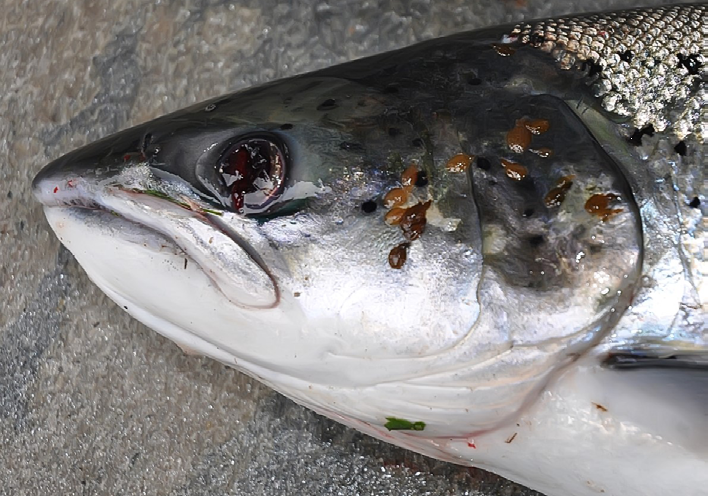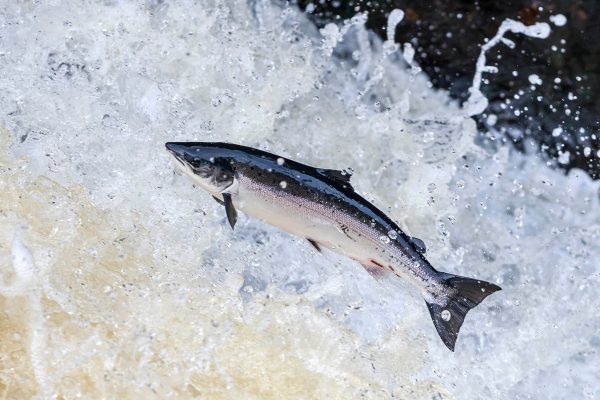Salmon Aquaculture Industry
SWIRL will campaign tirelessly to stop any expansion of the salmon aquaculture industry either through new licences or increased production amendments to existing licences. SWIRL is committed to protecting wild salmonids but the situation as it pertains in Ireland today in regard to salmon farming must be changed as the status quo is destroying and will continue to destroy our game fish heritage. Change is required immediately.
SWIRL contends that open net salmon farming is unsustainable, needs to be phased out as a matter of urgency and replaced with closed containment systems. No further licences for open net farms should be issued and during the phase out period strict, hard law rules on the environmental impact of the farms should be enforced. A new aquaculture authority responsible for setting standards, licencing, regulation and enforcement needs to be established independent of the Department of Agriculture, Food and the Marine.
Although it does not affect all of our salmonid rivers, over the past forty years, salmon farming in Ireland’s inshore waters has had a devastating effect on sea trout and salmon stocks across virtually all systems in the south west, west and North West. The industry is now firmly integrated into many rural coastal areas. Nonetheless, it is tiny by international standards producing less than 12,000 tonnes per annum in 38 farms (Currently 14 farms operating as at March 25) along the southwest, west and northwest coast and employing less than 250 people.
SWIRL is committed to protecting wild salmonids from the unsustainable open net pen salmon farming industry in Ireland. We can only support sustainable aquaculture and certainly the salmon farming industry as it presently operates does not do so in a sustainable manner and is extremely harmful to wild salmonids.
The effect on wild salmonid stocks is certainly beyond debate with most of our rivers adjacent to salmon farms now virtually devoid of sea trout. Depleted salmon stocks are also reflected in areas with direct contact with salmon farms with research demonstrating a substantial reduction in returning adults.
There is an overwhelming international scientific consensus about the impact of salmon farming on wild salmonids, principally through the aggregation of sea lice in quite wide areas around sea cages and disease originating in the farms and their impact on migrating salmonids.
The effects on sea trout are more severe due to their near shore feeding pattern which allows them to be at risk throughout their residence at sea. Wild salmon smolts appear to quickly exit near shore areas on their migration and may not be as affected as sea trout which are at risk throughout their residence at sea. However wild salmon adult returns, especially when farms are in their second year of production, have been demonstrated to reduce adult returns by up to 40% with sea trout reduced by up to 90%.
Of concern also is the increased incidence of pathogens and diseases in the sea cages leading to the possibility of transfer to the wild populations. Generally it is difficult to quantify what effect these diseases are having on wild fish. Most fish affected may die or are compromised to an extent whereby they are at risk of increased predation.
Unfortunately lack of research into disease transmission to wild fish by salmon farms is poorly resourced. This appears to be the policy of regulatory bodies here and abroad, thus protecting the industry from scrutiny. SWIRL will campaign to focus private and government research on disease transmission to wild salmonids.
SWIRL has been to the fore in actively campaigning to stop the spread of this industry and to ensure a proper regulatory environment. However, this approach of seeking better regulatory and management practices may not suffice in our changing environment. Rising sea surface temperatures along Ireland’s west coast causing an increase in parasite borne diseases, increased sea lice resistance to chemical treatments, increasing farm fish mortality and growing evidence of the impact on the surrounding environment of pesticides used to control sea lice, suggest that an entirely new approach is needed.
The salmon farming industry itself must transition to a technology that protects their own farmed fish, protects the fragile near shore environment and gives wild salmonids a guaranteed protection. That means transitioning to technologies that up to now have been largely ignored by both the industry itself and by the Irish regulatory bodies.
The only real guaranteed way to protect wild salmonids would be to see the industry removed from Ireland’s coast onto land or its complete closure.
The advancement of new technologies including re-circulation (RAS) techniques on land has been heralded as the way forward but certainly has to date not been demonstrated as capable of totally replacing open net technology or being economically viable. RAS is widely used to rear smolts on land and appears to be the preferred method going forward by the industry.
Semi-closed containment would appear to answer some of the questions in regard to protecting wild salmonids at sea with a physical barrier to parasites incorporated into design by virtue of water being drawn from depth (generally sea lice larvae are in top layer of water). It remains to be seen whether the industry will embrace this technology.

Sea Lice and Disease are everyday occurrences where salmon farms operate. New technologies will help to alleviate effects on wild salmon and sea trout.
Currently this technology is being trialed in Norway and other countries and has been demonstrated to be effective against sea lice, but certain reservations remain about disease penetration. The industry in Norway appears to be trying to cut down residence period in open net cages by integrating this semi closed containment system into their production cycle.
This is not being done to protect wild salmonids but rather to protect their own farmed fish while improving environmental conditions which have reached a saturation point both in number of farms and parasite density.
Salmon Watch Ireland is extremely disappointed that these new technologies are not being trialed in Ireland and there appears to be reluctance by the government to adequately incentivise these technologies. This is a major strategic failure by Ireland.
There is a major conflict of interest at the heart of Irish aquaculture as the Department of Agriculture, Food and the Marine (DAFM) is responsible for both the development and regulation of aquaculture. It is SWIRL’s settled view that nothing less than an aquaculture authority independent of DAFM needs to be established with responsibility for the setting of standards, licencing, regulation and enforcement.
Salmon Watch Ireland continues to focus on the legal and scientific aspects related to the industry here and we have been successful in our 2021 High Court case resulting in the quashing of a new licence issued in Bantry Bay, County Cork. The present situation regarding salmon farming is that all licences are being reviewed and applications are with the Department of Agriculture, Food and the Marine for renewal. We have made numerous submissions on these renewals and await a decision from DAFM.
Our complaint relating to Section 19 of the Fisheries Act appears to have had an effect with this legislative section to be deleted from Irish legislation. We await this development.
The section in question allowed farms to continue operating if they had a valid application for renewal without going through an environmental assesssment. The current renewals have been subject to assessment but we believe that they are flawed and have made our submissions reflective of this.
We have relied on the precautionary principal and are backed up by numerous court judgements both in Ireland and Europe.
The legal requirement for consent for these licenses is contained
in the following judgements:
Kelly (Eamon) v An Bord Pleanála [2014] IEHC 400 1and Connelly
v An Bord Pleanála [2018] IESC 31. In Connelly, the Supreme
Court explained that the ‘overall conclusion’ which must be
reached before the competent authority will have jurisdiction to
grant development consent following an appropriate assessment ‘is
that all scientific doubt about the potential adverse effects on the
sensitive area have been removed.’




